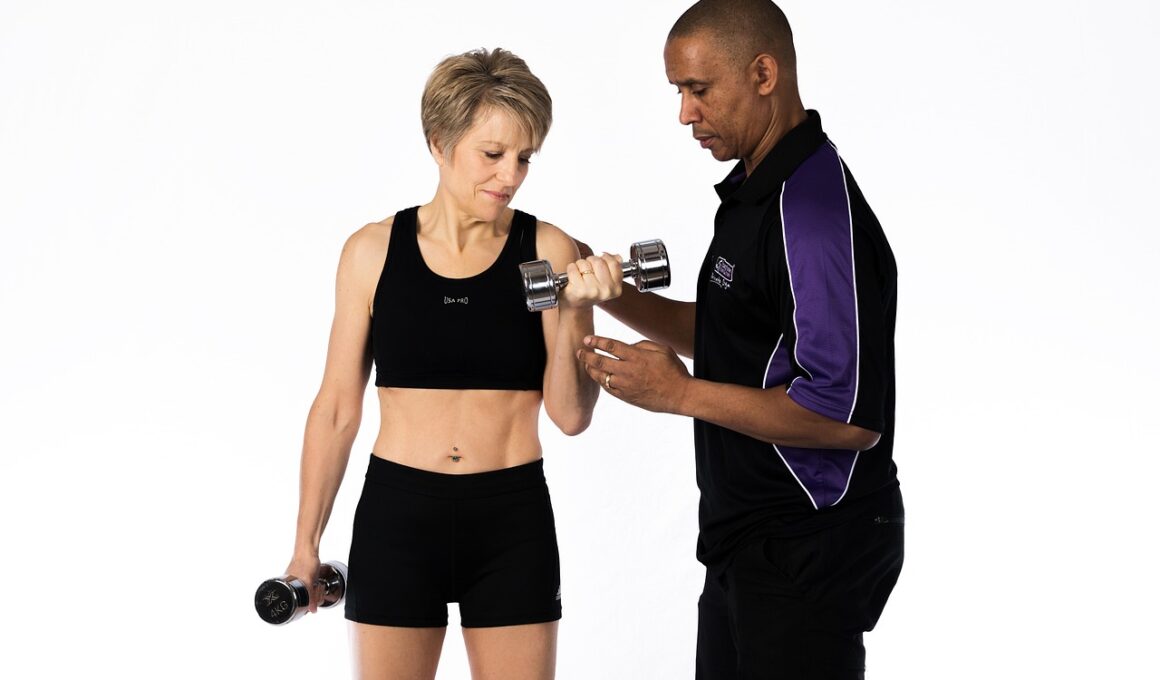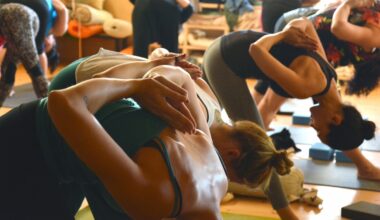Adaptive Sports Coaching: Specialized Training for Aging Populations
Adaptive sports coaching plays a crucial role in promoting physical activity among aging populations. It focuses on creating tailored training regimens that are responsive to the needs, abilities, and limitations of older adults. As we age, our bodies undergo distinct changes that may affect mobility, strength, and endurance. Therefore, it is vital that coaches are well-versed in the various challenges faced by older athletes. Adaptive coaching is unique because it emphasizes inclusivity, ensuring that everyone, regardless of physical condition, can participate. Incorporating adaptive sports into fitness programs addresses both physical health and social interaction. Coaches can develop customized fitness plans that cater to the specific conditions of aging individuals while keeping them engaged. This personalized approach maximizes the effectiveness of training, leading to improved overall health. Different adaptive sports can suit varying levels of ability, including wheelchair basketball, adaptive swimming, and seated volleyball, among others. This diversity promotes participation and encourages individuals to enjoy healthy competition. Furthermore, the right coaching can inspire older adults to pursue new athletic interests that align with their abilities, thus enriching their quality of life significantly.
Moreover, adaptive sports coaching enhances mental well-being among aging individuals. Engaging in physical activity has been scientifically proven to release endorphins, improving mood and combating depression. Coaches trained in adaptive methods can help participants develop healthier lifestyles, maintaining strong mental resilience as they age. Being involved in adaptive sports allows older adults to form connections with peers, fostering social networks that further support mental health. Participants often experience increased self-esteem and confidence levels because they can achieve personal goals through their adaptive sports involvement. Success in even small tasks can positively affect their overall psyche, making them feel more accomplished. In this environment, coaches become key motivators, empowering their clients to push past perceived limitations. The continuous encouragement from coaches helps build a supportive atmosphere where aging athletes can thrive. Coaches can implement various strategies, focusing on positive reinforcement and collaborative activities. Such training not only nurtures physical fitness but also bolsters emotional strength and resilience. By facilitating connections and building community, adaptive sports coaching mitigates feelings of isolation common among the elderly, thus allowing them to lead fulfilling lives filled with purposeful activities.
The Role of Coaches in Adaptive Sports Programs
Coaches of adaptive sports programs have a unique responsibility to ensure the safety and effectiveness of training for aging participants. They must possess knowledge of various disabilities and health conditions that may affect performance and adaptability. Equipping coaches with this knowledge is essential for designing fitness plans that ensure maximum physical benefits while minimizing the risk of injury. Emphasizing safety protocols also builds participants’ confidence in their training programs. Proper training can differentiate between a coach who merely leads drills and one who fosters a supportive environment. Adaptive coaches should strive to be lifelong learners, staying updated on best practices and industry standards in adaptive sports. Engaging in regular professional development helps them create better experiences for participants. Additionally, coaches should emphasize the importance of cultivating strong communication skills when working with older adults. Understanding how to motivate individuals with diverse backgrounds and health statuses will enhance coaching effectiveness. Listening attentively to individual needs is crucial, as every athlete may present unique challenges. By fostering positive relationships and mutual respect, coaches can create a thriving environment for adaptive sports enthusiasts, ultimately leading to healthier lifestyles and improved physical fitness for aging populations.
In developing adaptive sports programs, collaboration among various stakeholders is essential. Coaches should work with healthcare professionals, physical therapists, and community organizations to create comprehensive programs that address physical fitness in a holistic manner. Collaborative efforts enable a deeper understanding of the specific needs of aging populations, ensuring programs seamlessly integrate with existing health services. Additionally, outreach efforts are vital to educate potential participants and promote adaptive activities within the community. This outreach can inspire older individuals who may otherwise be hesitant to engage with fitness activities. Promoting awareness about the benefits of adaptive sports can encourage more seniors to participate, thereby fostering a sense of belonging within the community. Special events, workshops, and group classes can introduce these sports to new audiences and allow them to experience camaraderie with fellow participants. By showcasing success stories of older adults engaged in adaptive sports, potential participants can envision their capabilities, making them more inclined to participate. Thus, engaging with community support is crucial for building a robust framework for adaptive sports that encourages sustained participation and assists aging individuals in leading healthier and more active lives.
Nurturing Community and Bonding through Sports
Participating in adaptive sports creates opportunities for camaraderie between aging athletes. As participants train and compete, friendships develop, fostering a sense of community. Building connections among peers serves as another vital aspect of adaptive coaching. Older adults often face social isolation, leading to a decrease in both physical and emotional health. Adaptive sports help counteract loneliness by bringing individuals together who share similar interests and backgrounds. Through team activities, older adults build trust, share experiences, and encourage one another. Coaches can facilitate this bonding process by implementing team-building exercises that are inclusive and accessible to all participants. These exercises can focus on creating goals that require everyone to contribute, thus enhancing collaboration and motivation. As relationships deepen, the athletes often experience a significant impact on their mental health. They learn that they are not alone in their struggles, providing mutual support in navigating difficulties related to aging and health. These connections create a positive feedback loop, whereby engaging in more physical activities leads to stronger friendships, which further encourages participation. Adaptive sports prove to be a powerful vehicle for promoting health, unity, and social engagement in aging populations.
Incorporating technology into adaptive sports coaching can also enhance training for older athletes. Modern fitness apps and wearables can provide real-time feedback on performance, thereby allowing participants to track their progress and set attainable goals. Coaches should introduce these technologies as a means of engaging participants and increasing their understanding of fitness concepts. By utilizing technology, older adults can become more proactive in managing their health, empowering them to take charge of their physical well-being. Creating a culture that encourages the use of technology can appeal to a wide range of age groups within the aging population. Virtual platforms can connect athletes with coaches, enabling remote training sessions that best suit individuals’ needs. Elevated accessibility through technology ensures broader participation, even for those hindered by mobility constraints. Coaches must stay informed about emerging technologies and how they can be incorporated into training programs. Balancing traditional coaching methods with innovative technologies will boost the development of adaptive sports. This synergy ensures continued interest among participants, thus promoting sustained engagement in fitness activities that enhance their health and quality of life.
Evaluating the Impact of Adaptive Sports
Evaluating the impact of adaptive sports on aging individuals is crucial to understanding the effectiveness of these programs. Coaches should regularly assess the progress of participants, measuring physical health benefits, emotional well-being, and social engagement. These evaluations can be conducted through various methods, including surveys, fitness assessments, and performance metrics. By implementing systematic evaluations, adaptive coaches can tailor their training strategies to better meet the needs of aging athletes. Furthermore, documenting success stories can help inspire other older adults to join adaptive sports programs, thereby increasing participation rates. Analyzing data and outcomes related to adaptive sports will provide valuable insights into how to create optimal training environments. Engaging participants in the evaluation process fosters greater accountability and self-awareness about their health journeys. Professionals can also use findings to advocate for greater resource allocation and support of adaptive sports initiatives. The ongoing evaluation of adaptive sports helps keep programs relevant, ensuring they align with the evolving needs of the aging population. Ultimately, these assessments serve as a guide for providing the best possible adaptive sports opportunities for older adults, promoting a healthier lifestyle and active participation.
In conclusion, adaptive sports coaching offers essential training for aging populations, empowering older adults to lead healthier, more active lives. By addressing the unique needs of this demographic, adaptive coaches can foster a supportive environment that encourages participation and camaraderie. The integration of personalized training, technology, collaborative efforts, and ongoing evaluation ensures that adaptive sports remain effective and accessible. Additionally, the positive impact on mental health underscores the importance of building community through sports. As adaptive sports coaching continues to evolve, it remains imperative that professionals stay informed about best practices and advancements in the field. Empowering older adults to embrace adaptive sports not only promotes physical well-being but also fosters social bonds and emotional resilience. As awareness of these benefits increases, more aging individuals will be inspired to engage in adaptive activities. Future research and practice should further explore innovative coaching methods that enhance participant experiences and promote lasting impacts. The journey of aging individuals in adaptive sports is one of resilience, joy, and triumph, ensuring that fitness and well-being remain integral parts of their lives long into later years.


